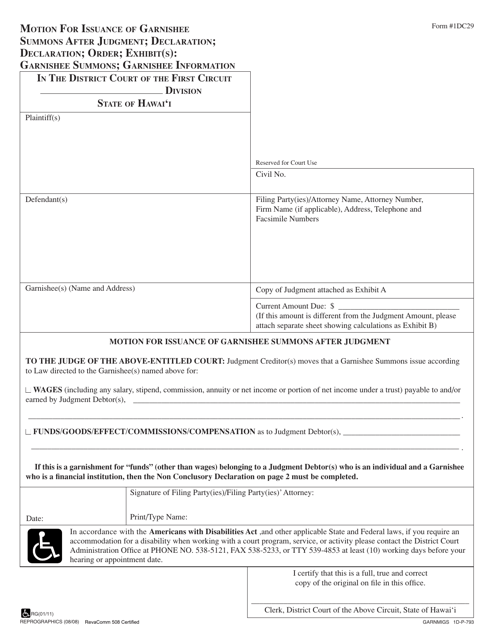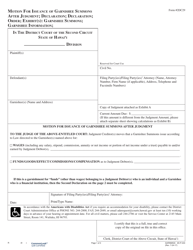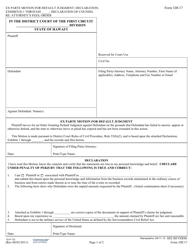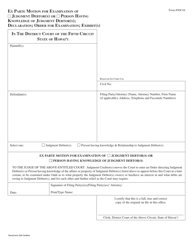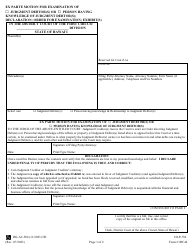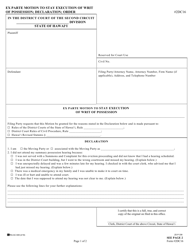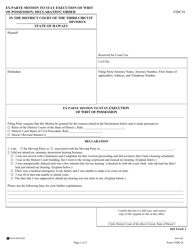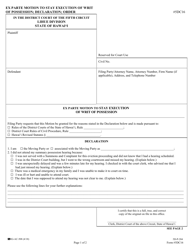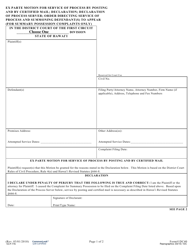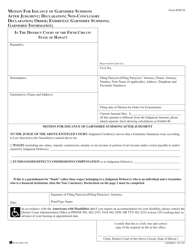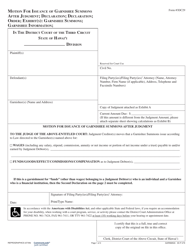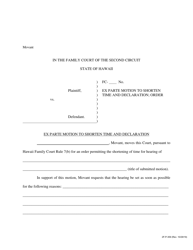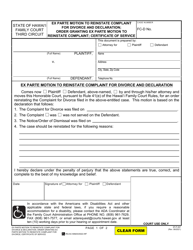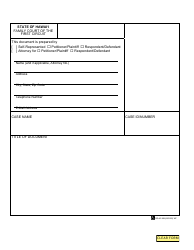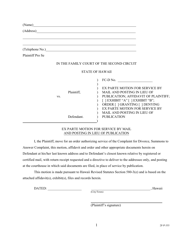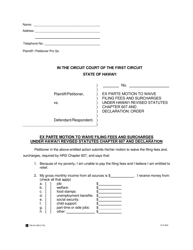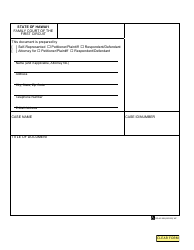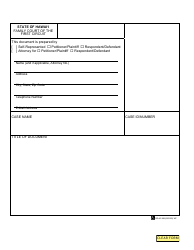Form 1DC29 Ex Parte Motion for Issuance of Garnishee Summons After Judgment; Declaration; Non-conclusory Declaration; Order; Exhibit(S); Garnishee Summons; Garnishee Information - Hawaii
What Is Form 1DC29?
This is a legal form that was released by the Hawaii District Courts - a government authority operating within Hawaii. As of today, no separate filing guidelines for the form are provided by the issuing department.
FAQ
Q: What is Form 1DC29?
A: Form 1DC29 is a legal document used in Hawaii for filing an ex parte motion for the issuance of a garnishee summons after a judgment.
Q: What is an ex parte motion?
A: An ex parte motion is a motion made by one party without giving notice to or obtaining the consent of the other party.
Q: What is a garnishee summons?
A: A garnishee summons is a legal document served on a third party who holds money or property belonging to the judgment debtor.
Q: What is the purpose of a garnishee summons?
A: The purpose of a garnishee summons is to collect money or property to satisfy a judgment.
Q: What is an exhibit?
A: An exhibit is a document or other material that is attached to a legal filing and referenced in the filing.
Q: What is a garnishee?
A: A garnishee is a third party who holds money or property belonging to the judgment debtor.
Q: What information is included in a garnishee summons?
A: A garnishee summons typically includes information about the judgment debtor, the garnishee, and the amount of money or property to be garnished.
Q: What is the purpose of Form 1DC29?
A: The purpose of Form 1DC29 is to request the issuance of a garnishee summons after obtaining a judgment in Hawaii.
Q: Is a declaration required for Form 1DC29?
A: Yes, a declaration is required for Form 1DC29. It should be non-conclusory and provide relevant facts supporting the motion.
Q: What is a non-conclusory declaration?
A: A non-conclusory declaration is a declaration that provides factual information rather than mere conclusions or opinions.
Form Details:
- Released on January 1, 2011;
- The latest edition provided by the Hawaii District Courts;
- Easy to use and ready to print;
- Quick to customize;
- Compatible with most PDF-viewing applications;
- Fill out the form in our online filing application.
Download a fillable version of Form 1DC29 by clicking the link below or browse more documents and templates provided by the Hawaii District Courts.
